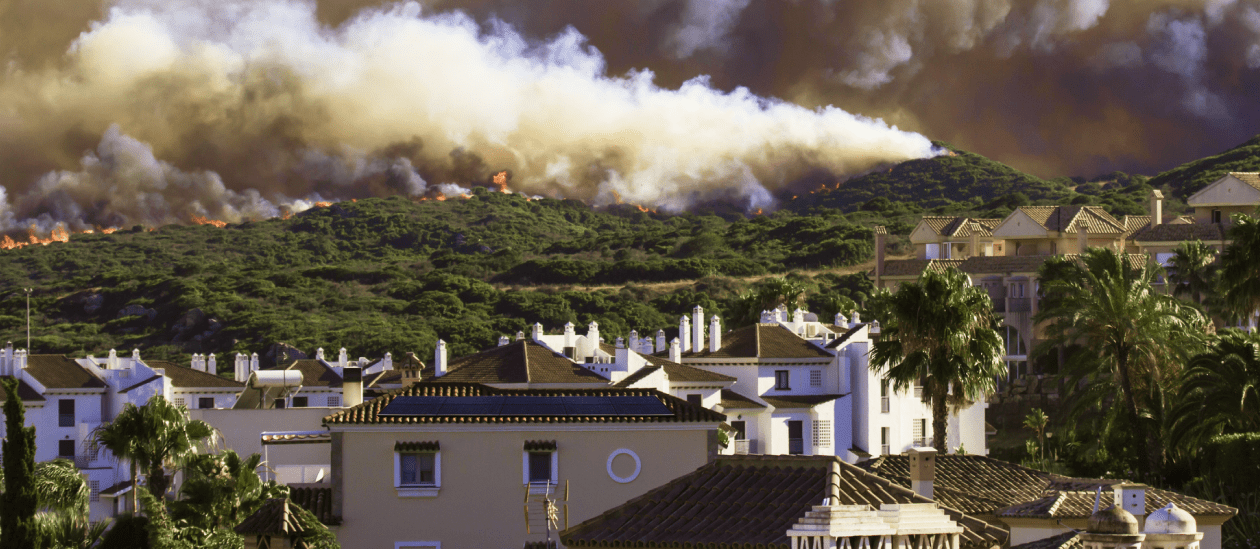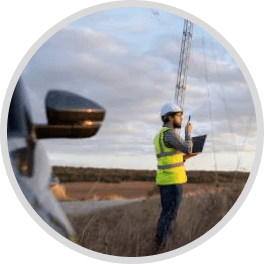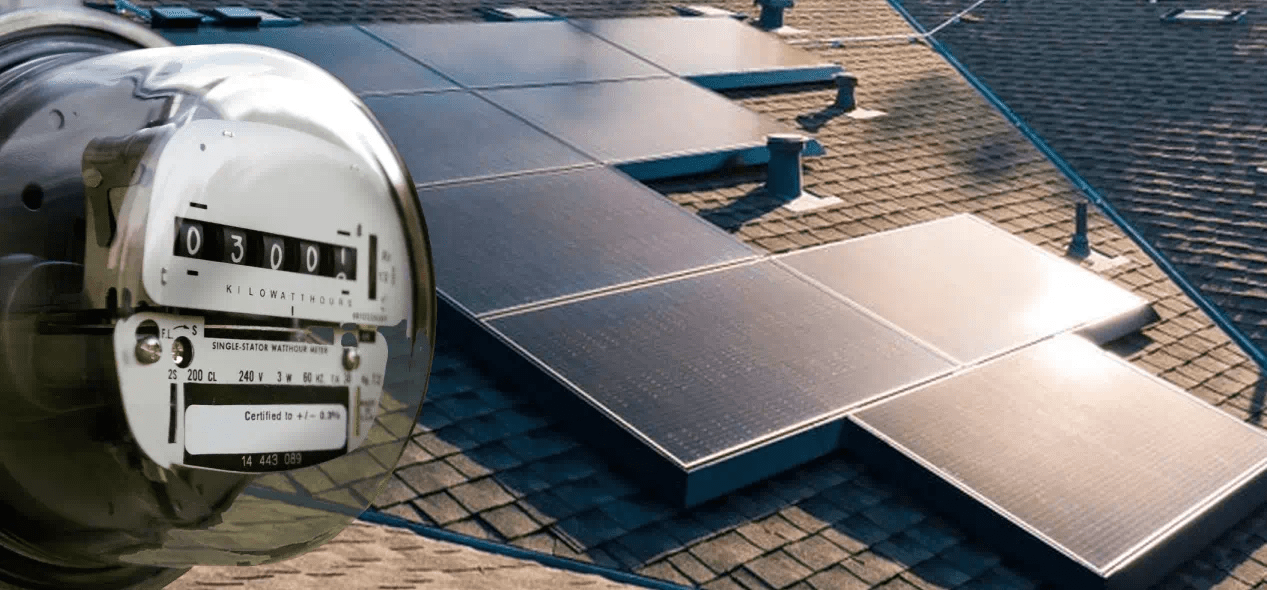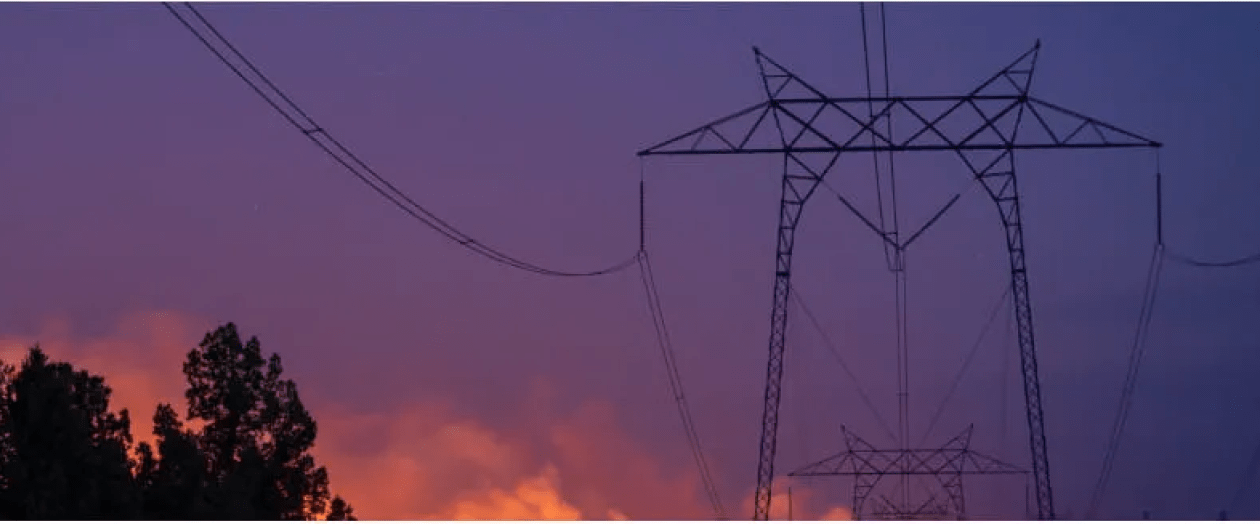

Forests are becoming hotter and drier while our power lines continue aging. A strong gust of wind that topples a tree on a 30-year-old distribution line can set an entire hillside ablaze within minutes. That’s what started the Dixie Fire, California’s second-largest wildfire, which scorched nearly 1 million acres across five counties in the summer of 2021.*
Catastrophic wildfires have occurred primarily in the Western U.S., but that, too, is changing with the climate. In 2023, Texas had more wildfires than California, with more than 7,500 fires burning over 205,000 acres.* As our climate warms, drought conditions are leading to more fires in southern and plains states.
To make matters worse, more people fled densely populated cities for remote (and highly flammable) regions after the pandemic and downplayed the risk of moving into a fire zone in favor of this newfound utopia. If we’ve learned anything from the fires in California, it’s that an area that was once burned can easily burn again.
Power Equipment: A Leading Cause of Wildfires
From human acts of carelessness to lightning strikes to aging power equipment, there are several ways a wildfire can erupt. Here, we’ll focus on fires from power lines and how solar energy can help mitigate future fire risks.

Circuit Sag
Circuit sag and extreme weather events are the two main ways that transmission and distribution lines can cause a fire. Electrical power running through a circuit causes the conductors (made of copper and aluminum) to expand when heated.
During times of heavy power consumption, like hot summer days, that expansion increases the slack between transmission line structures and causes the lines to sag. When there’s too much sag, it can bring the lines closer to surrounding trees and shrubs.

Vulnerability
Unlike the insulated low-voltage lines that connect to homes, high-voltage transmission lines aren’t typically insulated. This means vegetation or debris can ignite from excessive friction on large power lines that run between cities.* Strong winds can also topple aging infrastructure.
A utility company can manage its power flow to a certain degree, but cutting power to a few areas can cause other circuits to become overloaded, which can lead to even more problems. This is one reason why the public safety power shutoffs (PSPS) in California cut electricity to millions of households at a time.
How Solar Can Help Wildfire Mitigation During High Demand Times

Introducing solar electric systems with battery storage can reduce a network’s power needs and keep electrical circuits within their limits. In areas that allow net metering, where solar customers can feed excess energy from their panels back to the grid, solar can even take on some of the additional load demands.
The more people who install home solar systems, the less likely the power grid is to become overwhelmed during times of heavy demand — typically in the summer when temperatures soar.
Hot, dry days and overloaded, sagging power lines can spell disaster, as the Dixie Fire proved.
Solar energy is just one example of a distributed energy resource (DER). A DER is a small-scale electricity supply or demand resource that’s interconnected to the electric grid.* Solar battery storage, electric vehicles, HVAC systems, and generators are also DERs.
Because the energy is consumed near the point it was produced, DERs don’t require transmission lines and often rely on renewable energy. By cutting down on the need for long-distance grid infrastructure, DERs can help utilities avoid investments in new transmission towers, power poles, transformers, and power lines. They can even eliminate the need for a new power plant, generating savings into the billions.*
Strengthening Community Resilience

Utilities like PG&E have taken the proactive approach of cutting power to transmission lines as a safety tactic. But this is often considered a last resort due to service disruptions to communities and residents that depend on electricity (think hospitals, local governments, etc.). Increasing the prevalence DERs like solar plus storage can help neighborhoods maintain power during a pre-emptive outage, improving community resilience.
Generally speaking, renewables minimize the need for fossil-fueled power plants, which release greenhouse gases that dry forests and prolong fire season. When a fire erupts, it releases more harmful emissions into the atmosphere, creating a cycle of devastation.
By installing cleaner, distributed energy systems, we can work together to slow the effects of climate change and reduce our collective wildfire risk. The result? Cleaner air, more resilient communities, and land that’s less likely to go up in smoke.
Ready to improve your wildfire mitigation efforts in your area?

